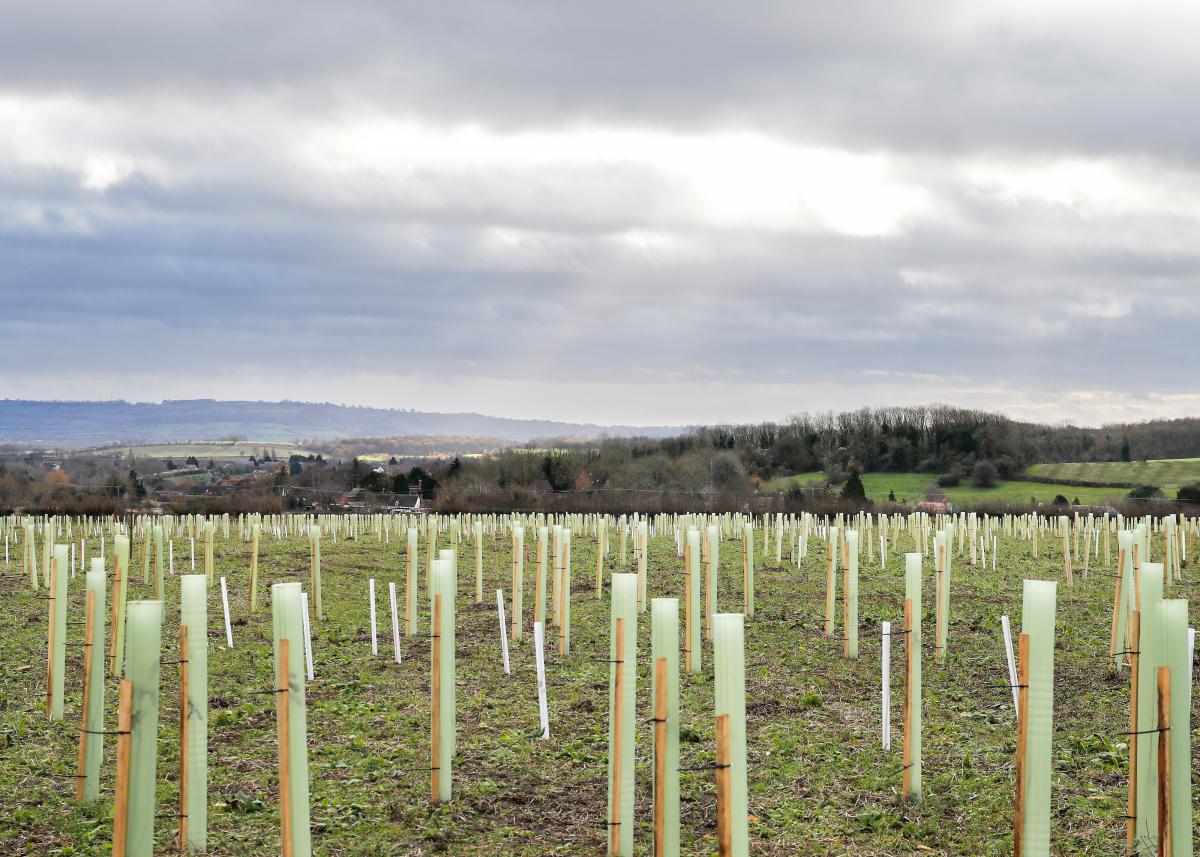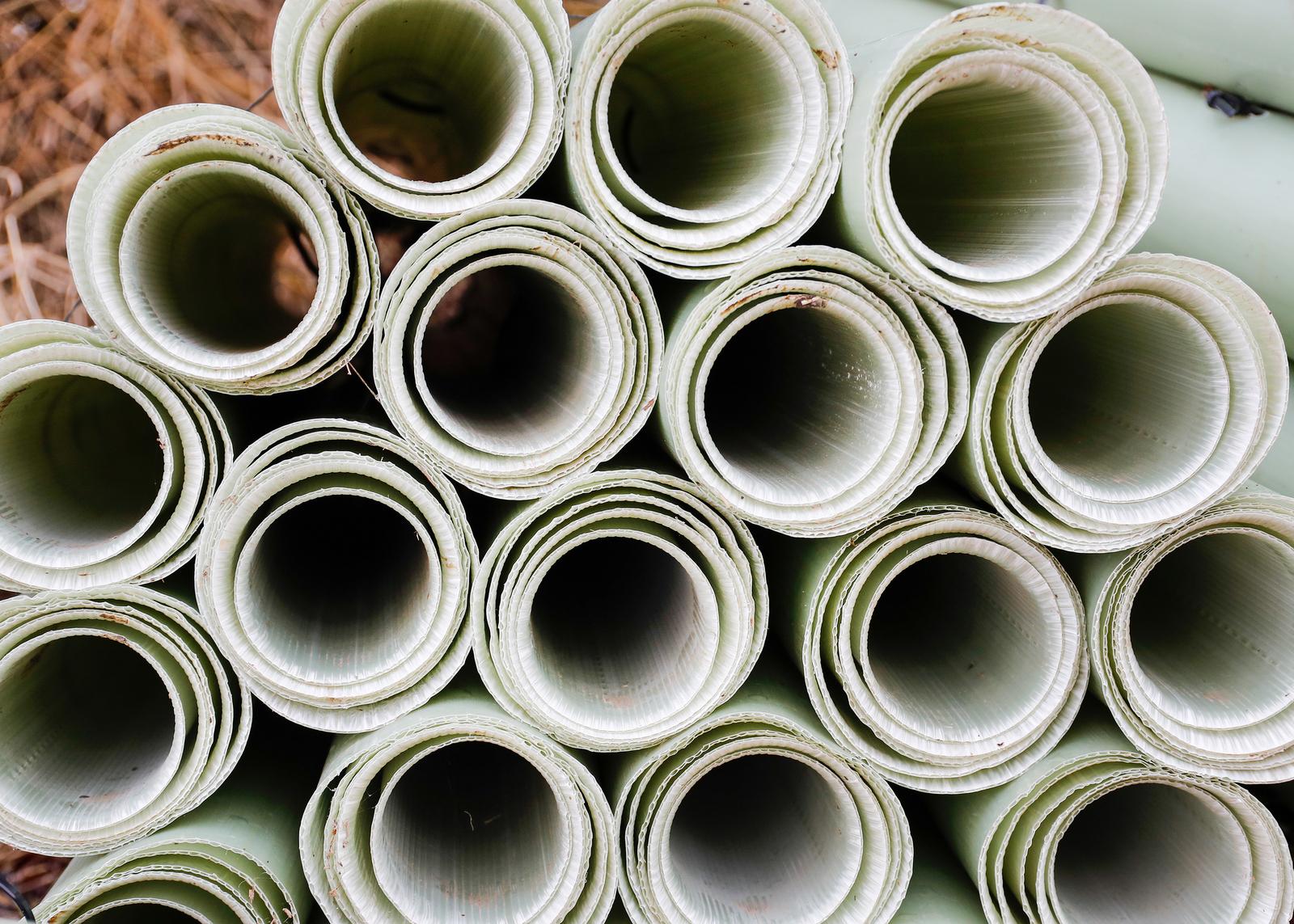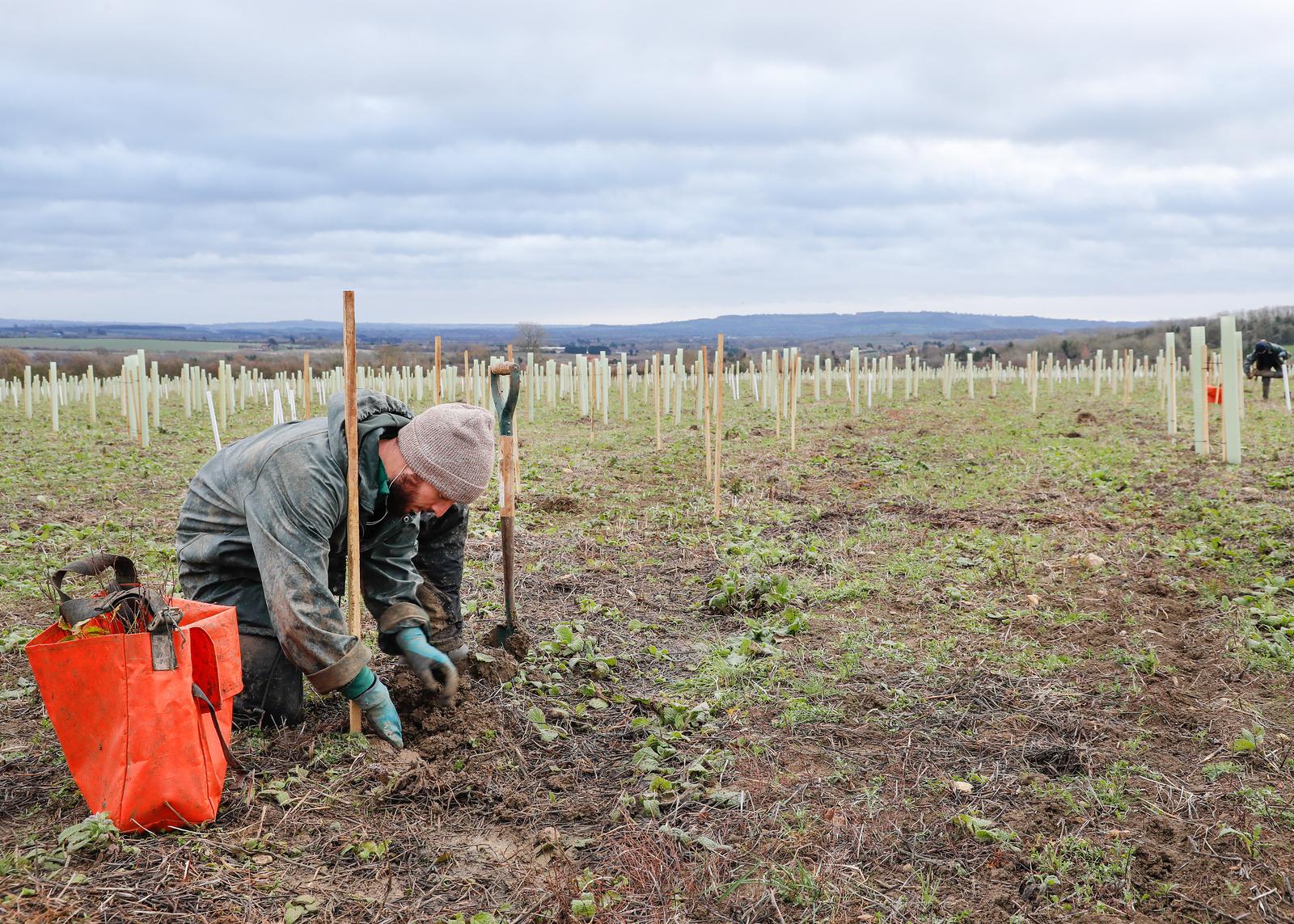
Innovating for a more sustainable future in forestry
Amongst the many topics on the agenda at the recent COP26 summit in Glasgow was the challenge of plastics pollution. More crucially, how we as a society can reduce over-reliance on single use plastics and ensure a more responsible approach to re-use and recycling of plastic products.
As a conservation charity dedicated to creating and preserving a 30,000 acre broadleaf forest for the benefit of the environment, wildlife, and people, this is a debate we have followed closely. It is also a challenge we experience on a daily basis in our operations.
While we will always strive to reduce the use of unnecessary plastics in all aspects of our operations as an organisation, there are some areas where it is particularly difficult. This is when innovative thinking and creative partnerships are required to find potential solutions.

Protecting what we plant
One of the biggest plastic reduction challenges any woodland establishment and conservation organisation faces is the use of tree guards. Tree guards perform many roles within a forest; they provide a microclimate to encourage saplings to become established quickly, let in light to enable the trees to photosynthesise and grow, and protect the young trees from browsing by mammals such as deer, but also hares and voles.
It is essential that we protect our new trees in their formative stages, for up to 10 years, and as one of the largest planters of trees in the country, we need the guards to be robust, cost effective and easy to fit, as our tree planting is carried out by staff, volunteers and local people. Currently plastic tree guards are the most effective option available at the scale we need. There is an added challenge of the tree guard marketplace being a relatively immature one, which has not yet been able to diversify and adapt it’s offering to increase choice and reduce costs.
However, there are many ways in which we are working to reduce the use of plastic tree guards and the impact they have on the environment.

Responsible use of plastics
When it comes to the responsible use of plastic tree guards, we work on a reduce, reuse, remove, recycle basis.
Reducing, reusing and recycling plastic tree guards
Where possible we are reducing the use of plastic tree tubes by trialling alternatives, including using none, we reuse tubes where we can, and when we can’t we are working with the supplier to recycle all our tubes. We now only buy tubes that are recyclable and we have stopped the use of tree spirals as there are no recyclable alternatives for these.
Removing plastics from the Forest
Any plastic tree guards that are used within the Heart of England Forest are collected by our team and volunteers when they are no longer needed. In 2019 we removed plastic tree guards from an area of 243 acres of the Forest, which is the equivalent of 121 standard football pitches. Ensuring that all the materials removed are responsibly recycled and not left out on the trees and land is an important and popular task for our volunteers and a crucial part of our work as an organisation.
During the pandemic, whilst group volunteering was suspended, many volunteers chose to undertake microvolunteering tasks to support the charity. Working on their own removing tree guards during periods of exercise and leaving piles for the forestry team to collect up was one such activity. Now the volunteering programme is back in full swing, we will be covering more areas of the Forest, removing guards where the trees are sufficiently established.
Whilst guard removal is an activity which can be done throughout the year, collecting up these piles of guards, often in more remote locations, requires access by a vehicle. To avoid damaging and compacting our soil structures, which are vital for carbon sequestration and a healthy ecosystem, we do not take vehicles off the tracks in winter months, waiting until the drier weather in the spring when vehicle impact is minimal. You may, therefore, see piles of guards awaiting collection as you enjoy your walks in the Forest.
Occasionally an enthusiastic dog adopts a guard as a toy, tearing around the Forest with it, leaving it strewn once it has found a more interesting activity. If you see an abandoned, often shredded guard, please do help the Forest ecosystem by taking it home for disposal, or leaving it by the bin in a Forest car park.
Should you be concerned about any plastic waste in the Forest, please let us know at info@heartofenglandforest.org. A What3Words location is very helpful to enable us to identify the exact positioning of the pile of tubes to enable us to collect them up. Thank you for caring about the Forest.
Eliminating the use of tree guards
When it comes to the option of not using tree guards at all, there are many elements we need to weigh up, with our priority being the health and protection of the trees we plant. While studies looking at the long-term impact of planting without the use of tree guards are underway, including those we have undertaken with partners and as standalone research led and funded by the Heart of England Forest team, it will take several years to know whether this is a safe and viable option for us.
Trialling new solutions

Our current focus is on exploring innovative new solutions to reducing our reliance on plastic tree guards and we are excited to be partnering with the Woodland Trust on a trial of a new product called Tree Hugger.
These tree shelters are manufactured from organic cotton impregnated with polymers that are derived from renewable pine tree rosin. This bio-composite provides a natural and sustainable solution to tree protection. As well as the environmental benefits of this, it also means less time and money will need to be spent removing and disposing of the shelters as we do now.
While it is early days for this trial and the materials and composite for the Tree Hugger are still patent pending, we are hopeful that viable alternatives to plastic tree guards are on the horizon. We believe that the proactive steps we are taking to collaborate and innovate around this will bring us closer to our goal of a healthy and thriving forest, free from unnecessary plastics.



